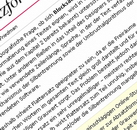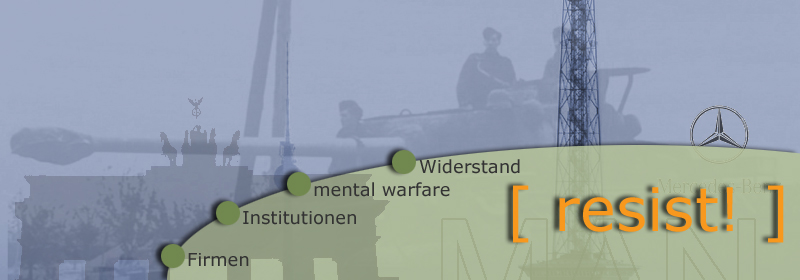Neue Wache
![]() Print
Print 
![]() Neue Wache
Neue Wache

Neue Wache ("New Guard House" — National Memorial to the Victims of War and Tyranny)
In 1818, when the Prussian King took up his city residence in the palace across Unter den Linden, the court architect Karl Friedrich Schinkel built this building for the king's guard.
The gable relief portrays ancient battle scenes with Nike, the goddess of victory, and allegories for Prussian sovereignty and military might after the end of the Napoleonic occupation.
One-hundred years later, in 1918, this German empire came to an end with defeat in the First World War.
In 1931, the Social Democrats converted the guard house into a new "Memorial for Those Fallen in the War".
Two years later, the National Socialists renamed the building the "Reichsehrenmal" ("Memorial of Imperial Honor").
It glorified "heroic death" and was decorated with Nazi symbols and illuminated with dramatic lighting effects.
Pompous army parades and marches by the SA and SS were held at the Neue Wache during memorial ceremonies for the war dead.
In 1951, the East Berlin magistracy decided to rebuild the Neue Wache, which was heavily damaged during the war.
A newly designed interior was inaugurated in 1968/69, to mark the twentieth anniversary of the German Democratic Republic (GDR).
The Neue Wache was then called "Memorial to the Victims of Fascism and Militarism". The term "victim" was used very broadly.
In addition to the ashes of an unknown concentration camp victim, an urn with the remains of an unknown fallen soldier was also buried there.
In addition, an urn with earth from nine former concentration camps was placed beside earth from nine World War II battlefields.
In this way, an equivalence was implied between the concentration camp prisoner and the German army private, who presumably was misled by the "Fascist capitalist monopoly".
In the official view of the GDR, both were regarded as victims of National Socialism — an appallingly tasteless piece of historical revision.
Until German reunification in 1990, two soldiers of the Friedrich Engels guard regiment were posted as daytime guards of honor.
On Wednesdays and Saturdays, a special patrol of the GDR's army guard marched back and forth in a Prussian goose-step.
The most recent re-dedication of the building was carried out at the order of then Chancellor Helmut Kohl.
He had an enlarged replica of the Kollwitz sculpture "Mother with her Dead Son" installed.
In artistic terminology, the figure is called a "pieta" because it mirrors the representation of Mary and the body of Jesus after he is taken down from the cross.
The inscription on the base dedicates it to "the victims of war and tyranny". There is no reference to National Socialist terror.
On the National Day of Mourning in 1993, the Neue Wache was renamed the "National Memorial to the Victims of War and Tyranny".
This renaming provoked controversy and protest.
The "Kohl Memorial," as critics dubbed it, was criticized for using a Christian mourning theme, which many people found unsuitable in view of the scale of National Socialist murder, plunder and pillage.
The indiscriminate expansion of the term "victim" was also heavily criticized, since it included both the German victims of Nazi rule (thereby breaking a decades-long taboo) and the victims of the GDR regime.
The vague inscription dedicated to "the victims of war and tyranny" indicates how reactionary conservative politicians intended to pursue the aims of normalizing Germany and re-legitimating German nationalism.
Critical pressure at that time was so great that explanatory panels had to be added. Kohl's agreement to establish a "Memorial to the Murdered Jews of Europe" should also be regarded in light of this debate.
In retrospect, however, the nationalist "we are back among the big boys" agenda effectively prevailed:
Bundeswehr deployments abroad, the "Memorial to the Fallen Bundeswehr Soldiers", a sea of German flags everywhere, and the "Zentrum gegen Vertreibung" ("Center Against Displacement") are all developments
few people considered possible 20 years ago.
Maybe it's time to rename the Neue Wache once again, put an end to the goose-step wreath-laying ritual, and create a "Memorial Against Militarism and the Posture of German National Domination".
summary: Neue Wache

